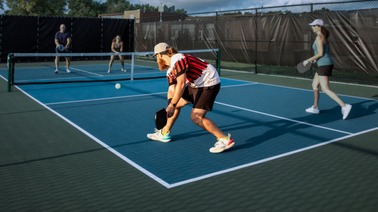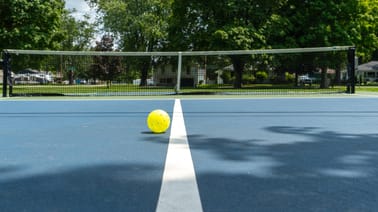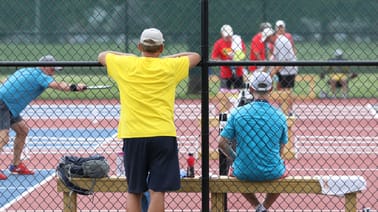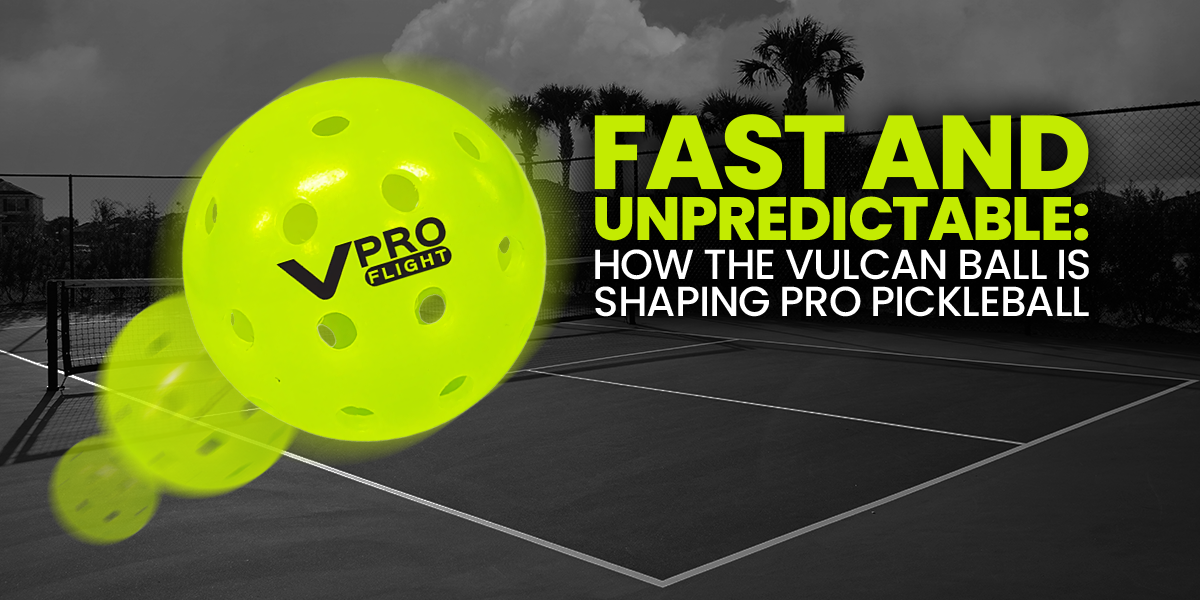
The Vulcan VPRO Flight, the new official ball of the PPA tour, and Vulcan’s first attempt to market a pickleball has had a tumultuous first season, affecting the game in unexpected ways.
Most pros resist going on the record about the ball, but off the record, their opinions are plentiful—and mostly negative.
These opinions can be summarized as: "It doesn’t bounce true," or "It doesn’t have a consistent flight."
Vulcan has taken this feedback seriously. They’ve been working diligently to correct the design and manufacturing issues, making significant progress. In fact, OG pickleball and Selkirk-sponsored coach Daniel J. Howard’s review of the Vulcan VPRO Flight 2 highlighted substantial improvements in playability.
That said, when I asked a top PPA pro about the second version, he told me it still needed work before I even finished my question.
This frustration was never more visible than at this week's PPA Las Vegas Open, where the world’s best player, Ben Johns—rarely one to lose his cool—slammed the ball in his losing match against Roscoe Bellamy.
"It’s garbage," he yelled in frustration. "Get a new ball; make it a real sport! It doesn’t bounce."
Money Ball
Vulcan’s winning bid to become the official ball of the PPA is rumored to involve $2.5 million annually, plus 8-10% royalties on all balls sold—a lucrative deal for the PPA. Couple that with the generous salaries many PPA players were offered in the aftermath of the tour wars, and you can see why players are hesitant to criticize a major source of PPA revenue.
Variations on a Theme
The Vulcan ball is hard and fast, leading to a faster game, but that’s not the only reason it promotes an aggressive playing style. Its variability off the bounce and through the air creates unpredictability, most noticeable on the return of serve.
“You can’t run through the return like you used to,” one pro explained. The ball is served hard on tour, and the Vulcan ball often takes an unpredictable bounce. “You have to be deliberate and pause to make solid contact.” Missing a return is one of the cardinal sins in pickleball.
However, pausing for the return has its drawbacks—it costs precious time in the race to the kitchen line. It's no surprise we’re seeing more third-shot drives at the pro level. It’s easier to catch a pro off balance following their return, as they slow down to read the ball’s bounce.
But that’s not all. “Given the ball can take a weird bounce, we’re generally dinking less and taking more balls out of the air,” another pro noted. Shots that require touch, like resets and soft dinks, are now riskier. “Dinking is still effective, just less so than volleys and attacks out of the air.” This shift benefits taller, more aggressive players and even pushes more cautious players to lean in and take chances in the air.
This aligns with what I heard last month from Andrei Daescu, one of the tallest pros on tour. He’s adapted well to the Vulcan ball and has no issues with it. "Tennis has lots of different balls that pros have to adjust to," said the former Romanian Davis Cup member. Indeed, every major tennis slam uses different balls and playing surfaces. Perhaps a similar variation could be an interesting idea for the PPA if it continues to expand its grand slam format.
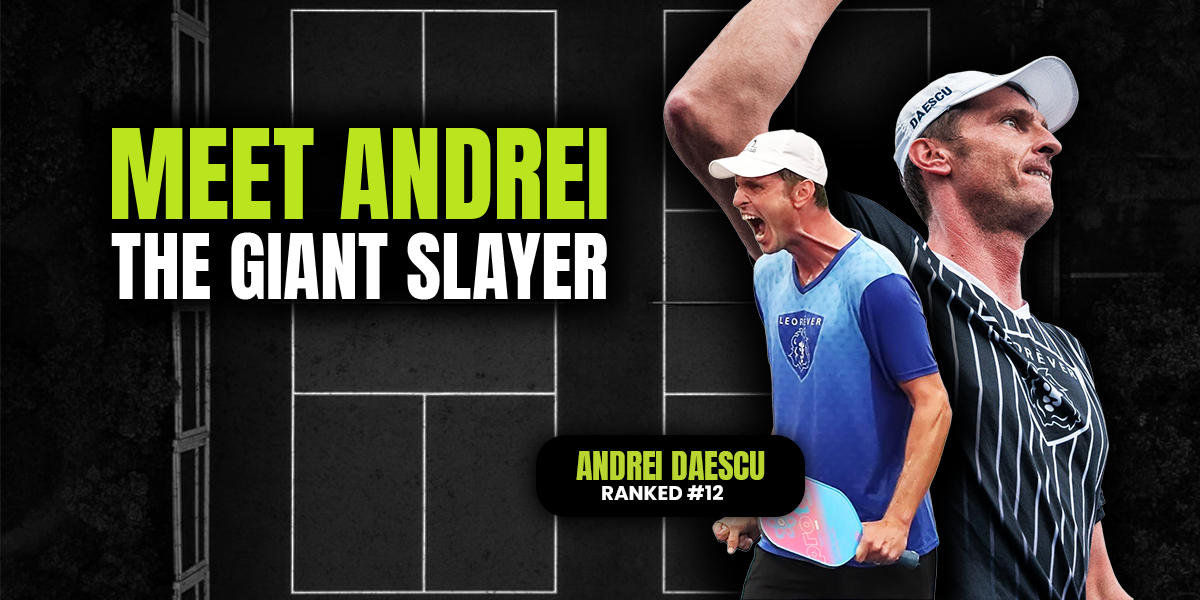
The Game Is Getting Faster
Of course, other factors besides the ball impact the speed of play, such as hotter paddles and uneven indoor surfaces. But the ball remains a key element in the game’s faster, more aggressive evolution.
Contrary to what one might expect, most pros enjoy the speed of the Vulcan ball. The previous PPA ball, the Dura Fast 40, was known as the fastest on the market, but it didn’t warp as much as the Vulcan, which is why it drew less criticism. The Dura would simply break when overstressed.
Ball Science
The softer the plastic, the quicker the ball regains its shape—think of a sponge ball. Press it, and it immediately snaps back into form. A toothbrush made of harder plastic, on the other hand, might take much longer to straighten out after being bent. In fact, it might never fully return to shape. Bend a toothpick made of hard plastic, and it might break before it even bends much.
These concepts help explain what’s happening with pickleballs. In this analogy, the Dura ball is the toothpick—it's hard, and if hit with enough force, it breaks before it bends to the point of affecting playability. The Franklin X40 is more like a sponge—soft, compressible, and quick to snap back to shape. Out-of-round issues are rarely a concern.
The Vulcan ball is more durable than either, which is great for the environment, but this durability comes at a cost. If a pro hits the Vulcan ball with enough power, it bends but doesn’t break, and it may stay bent—like the toothbrush analogy. This is why the ball is swapped out after every game on the PPA tour. After about 15 minutes of sustained pro-level play, the ball becomes unstable.
While the ball may hold up well on amateur league nights, anyone who’s attended a pro tournament knows the difference in power the moment they hear the pros hit the ball. In fact, the few amateurs I’ve spoken to who own a Vulcan ball have no complaints about playability, suggesting this issue is isolated to higher levels of competition.
Vulcan’s design tries to strike a balance between durability and speed, but these two factors combined seem to create variability.
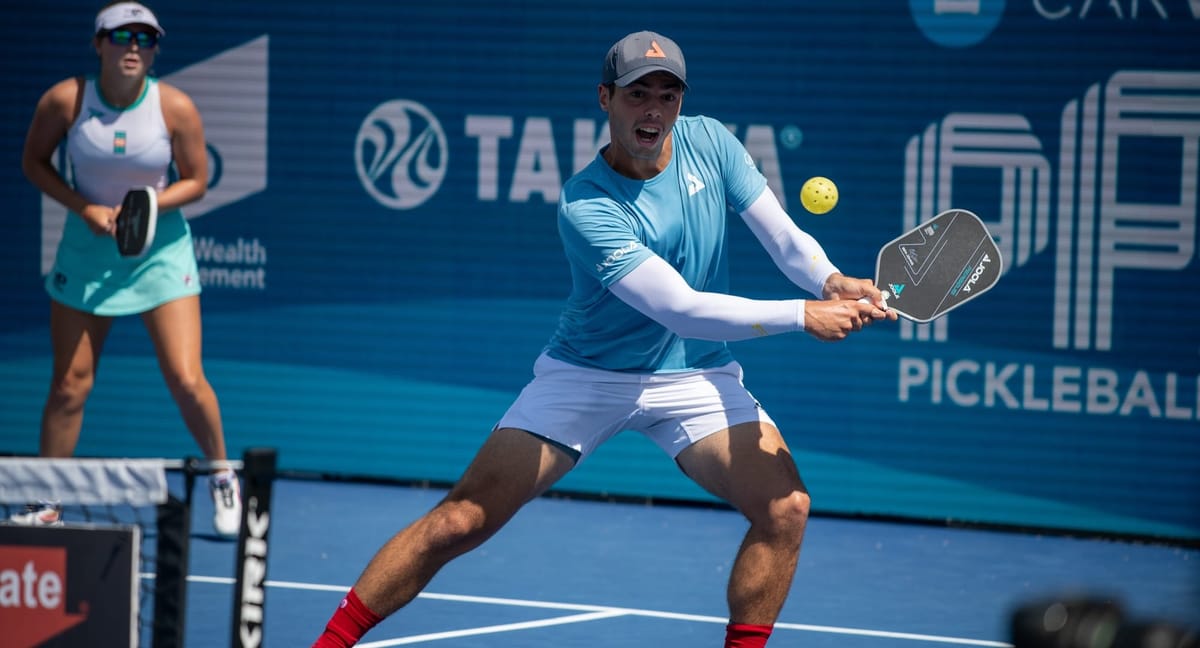
Does It Matter?
There’s an argument to be made that it doesn’t. As Andrei Daescu noted, the pros all play with the same ball. They’re paid to play, and as professionals, they’re expected to adapt. The conditions may not be ideal, but they’re consistent for everyone.
It’s well known that the PPA tour is banking on a media rights deal to solidify its financials. Until that happens, the PPA is maximizing revenue and entertainment value, which may mean sticking with a ball that pays the bills, at least for now.
The Bottom Line
Few recreational players use the Vulcan ball. "Only PPA players and those practicing for PPA events own this ball," one pro working through qualifiers told me.
While we don’t know the exact sales figures, we can’t be sure whether the early high price, the newness of the ball, or playability concerns are the reason for its absence on rec courts.
That said, I agree with the pro's assessment. After playing across the U.S., I’ve noticed amateur players tend to prefer the X40, Dura, or Selkirk balls. While each has its own issues, they generally bounce true and maintain their shape well enough not to disrupt gameplay.
Which raises the question: Why do rec players have more reliable equipment than the pros?
Perhaps the PPA, in its quest for visibility, has gotten ahead of itself. Vulcan, committed to getting its first pickleball right, seems equally invested in seeing this through to the end.
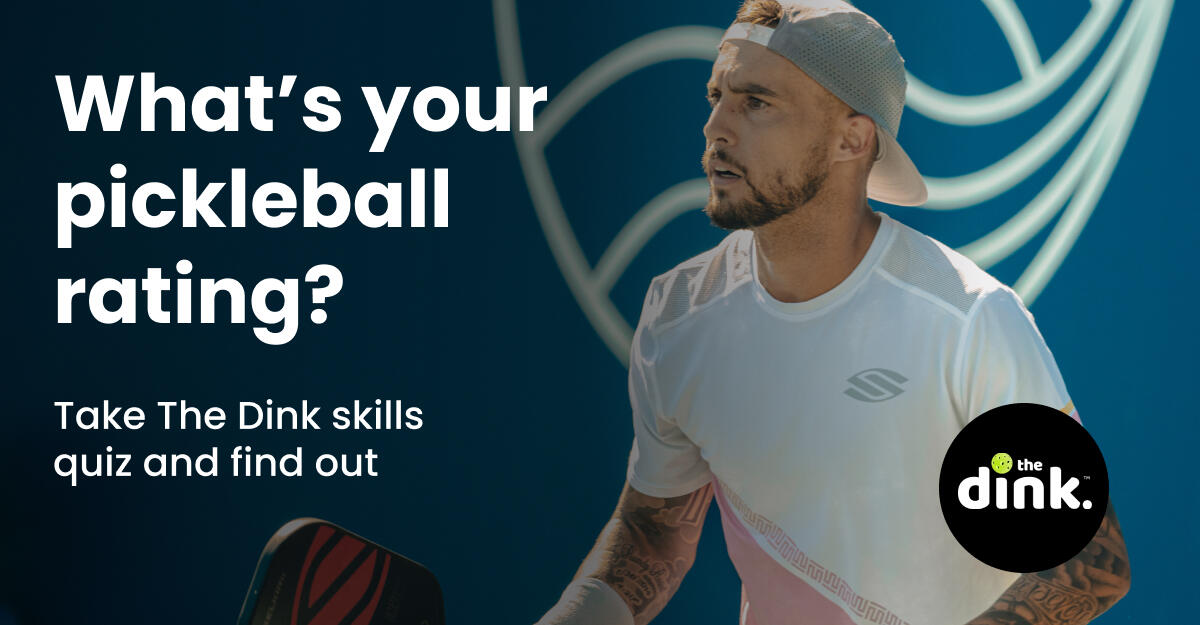

John Sanders
John Sanders is a PPR-certified instructor who can be reached at ThePickleProf.com. He helps players navigate their pickleball addiction with weekly tips on etiquette, technique, & injury prevention.




